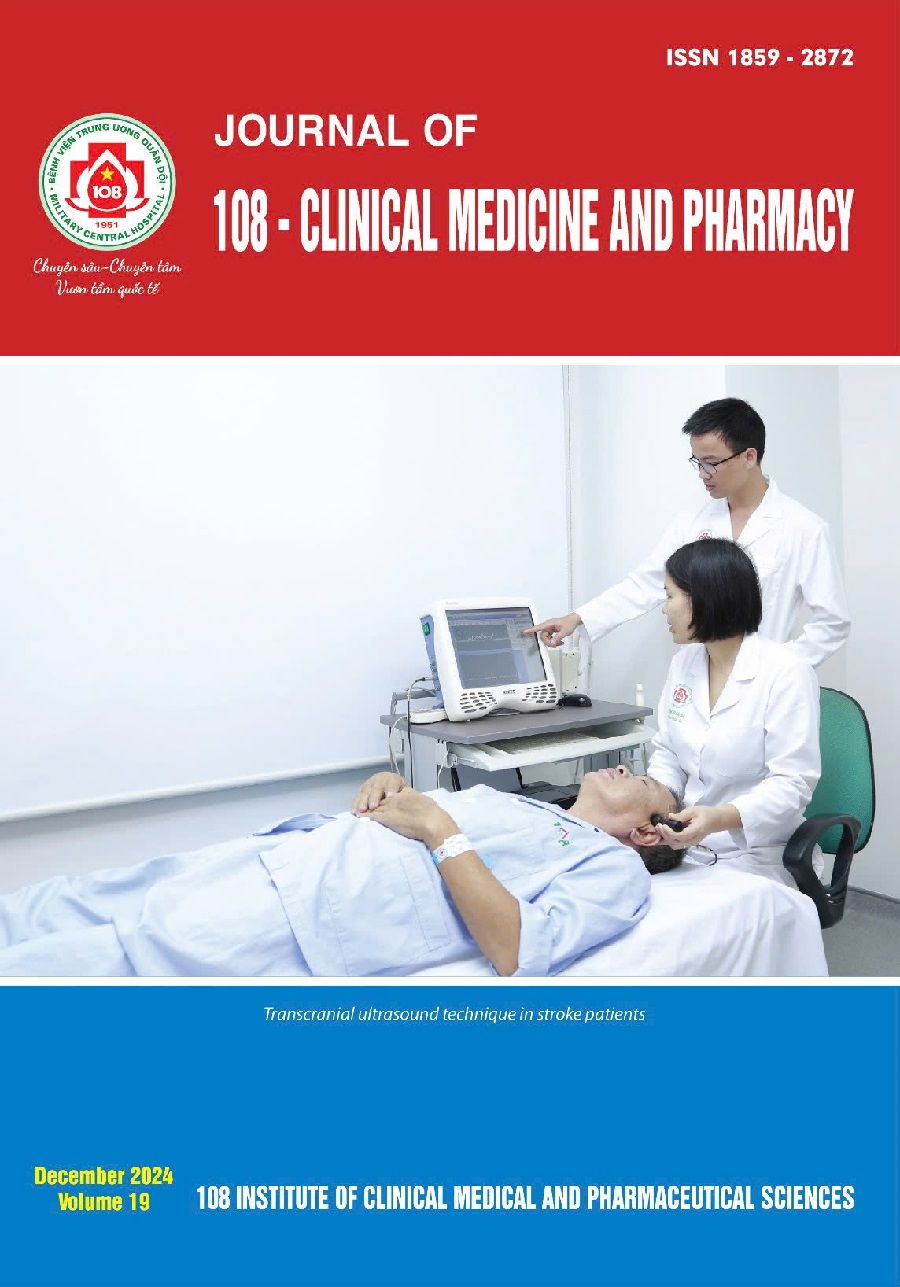Challenges and outcomes of ERCP in patients with periampullary duodenal diverticulum: Insights from a single-center retrospective study in Vietnam
Main Article Content
Keywords
Abstract
Background: The relationship between periampullary duodenal diverticulum (PAD) and ERCP outcomes remains unclear. This study aims to assess the effects of PAD on cannulation success, complications, and treatment efficacy in patients with bile duct stones. Subject and method: A retrospective study was conducted among 587 patients with native papilla who underwent ERCP from January 2021 to December 2022 at 108 Military Central Hospital, categorized into two groups: those with PAD (n = 143) and those without (NPAD, n = 444). We analyzed cannulation success, procedural difficulties, and complications. Result: PAD was identified in 22.9% of the cohort. Both groups had comparable successful cannulation rates (PAD: 98.6%, NPAD: 95.9%, p=0.2), yet PAD patients faced more significant challenges (35% vs. 23.4%, p=0.009). The necessity for biliary stenting was notably higher in the PAD group (16.3% vs. 9.6%, p=0.04). Although post-ERCP complications did not differ significantly, the hospital stay was longer for PAD patients (7 days vs. 6 days, p=0.0002). Conclusion: PAD may complicate the ERCP procedure; however, treatment outcomes remain primarily consistent across both groups. Enhanced management approaches are essential for improving patient care in those with PAD.
Article Details
References
2. MA O (2015) Effect of periampullary diverticulum on technical success and complications of endoscopic retrograde cholangiopancreatography: Single center experience. J Dig Endosc 6: 149-157. doi:10.4103/0976-5042.173960.
3. Tabak F, Ji GZ, Miao L (2021) Impact of periampullary diverticulum on biliary cannulation and ERCP outcomes: A single-center experience. Surg Endosc 35(11):5953-5961. doi:10.1007/s00464-020-08080-8.
4. Jayaraj M, Mohan BP, Dhindsa BS et al (2019) Periampullary diverticula and ERCP outcomes: A systematic review and meta-analysis. Dig Dis Sci 64(5):1364-1376. doi:10.1007/s10620-018-5314-y.
5. Sun Z, Bo W, Jiang P, Sun Q (2016) Different types of periampullary duodenal diverticula are associated with occurrence and recurrence of bile duct stones: A case-control study from a chinese center. Gastroenterol Res Pract :9381759. doi:10.1155/2016/9381759.
6. Yue P, Zhu KX, Wang HP et al (2020) Clinical significance of different periampullary diverticulum classifications for endoscopic retrograde cholangiopancreatography cannulation. World J Gastroenterol 26(19): 2403-2415. doi:10.3748/wjg.v26.i19.2403.
7. Chen Q, Zhang Y, Tang Z et al (2021) The role of periampullary diverticulum on the incidence of pancreaticobiliary diseases and the outcome of endoscopic retrograde cholangiopancreatography. Arch Med Sci 17(4): 905-914. doi:10.5114/aoms.2020.94591.
8. Xia C, Sun L, Peng L, Cui F, Jin Z, Huang H (2023) Factors and techniques associated with endoscopic retrograde cholangiopancreatography outcomes in patients with periampullary diverticulum: Results from a large tertiary center. Saudi J Gastroenterol 29(1):12-20. doi:10.4103/sjg.sjg_311_22.
9. Zheng H, Yan S, Li D, Xue Y, Deng X (2021) Influence of periampullary diverticula on endoscopic retrograde cholangiopancreatography. Exp Ther Med 21(4): 410. doi:10.3892/etm.2021.9841.
10. Nguyen Thi Hue, Nguyen Anh Tuan, Nguyen Thi Huyen Trang, Nguyen Xuan Quynh, Mai Thanh Binh (2024) Comparison of efficacy and safety between continuing sphincterotomy and precut sphincterotomy in difficult biliary access during endoscopic retrograde cholangiopancreatography. Vietnam medical journal 539: 283-287.
 ISSN: 1859 - 2872
ISSN: 1859 - 2872
